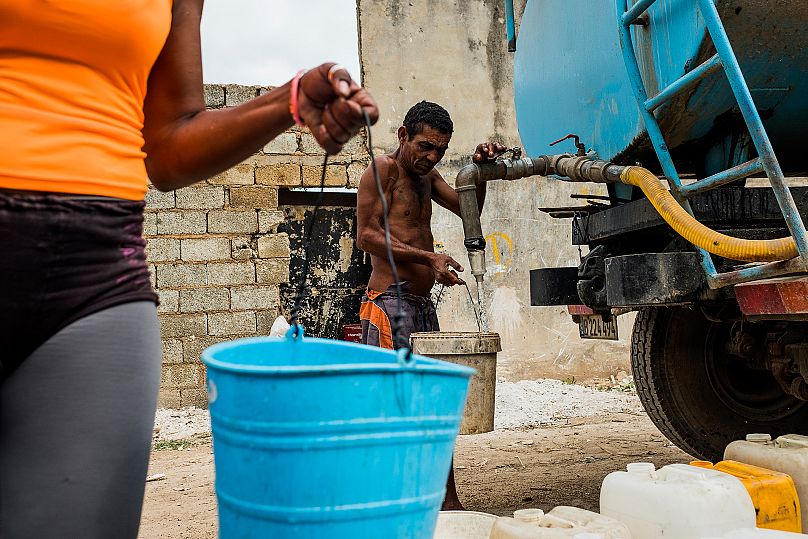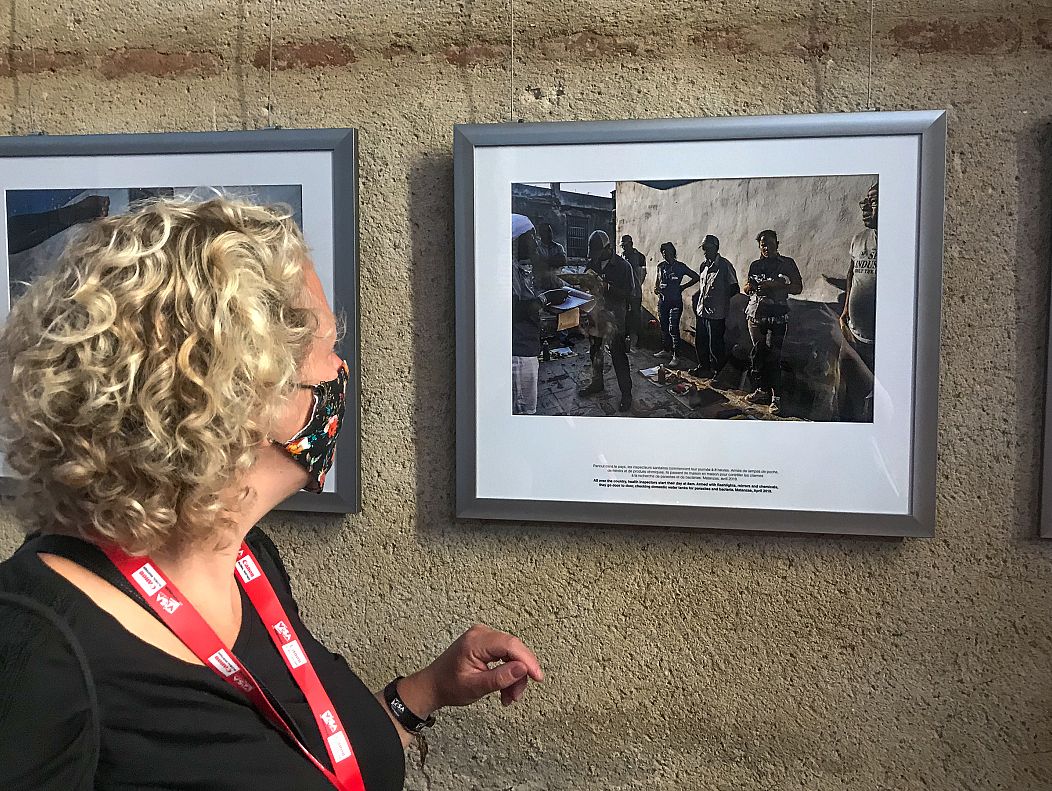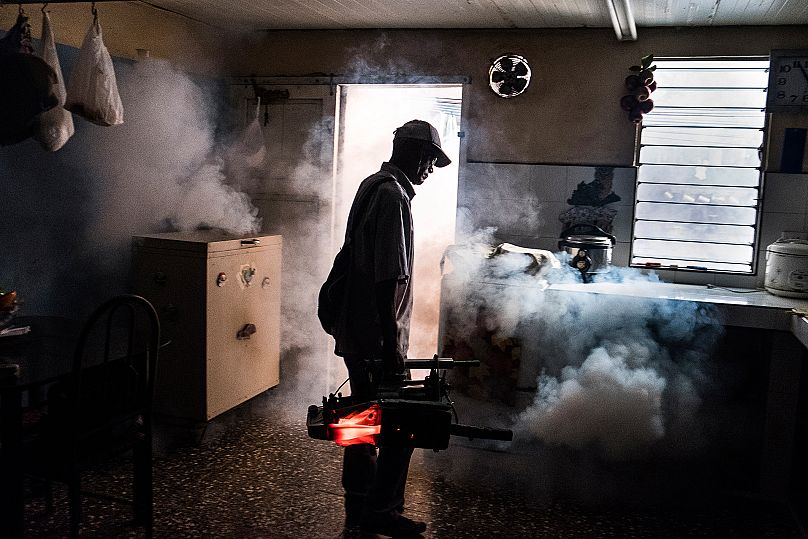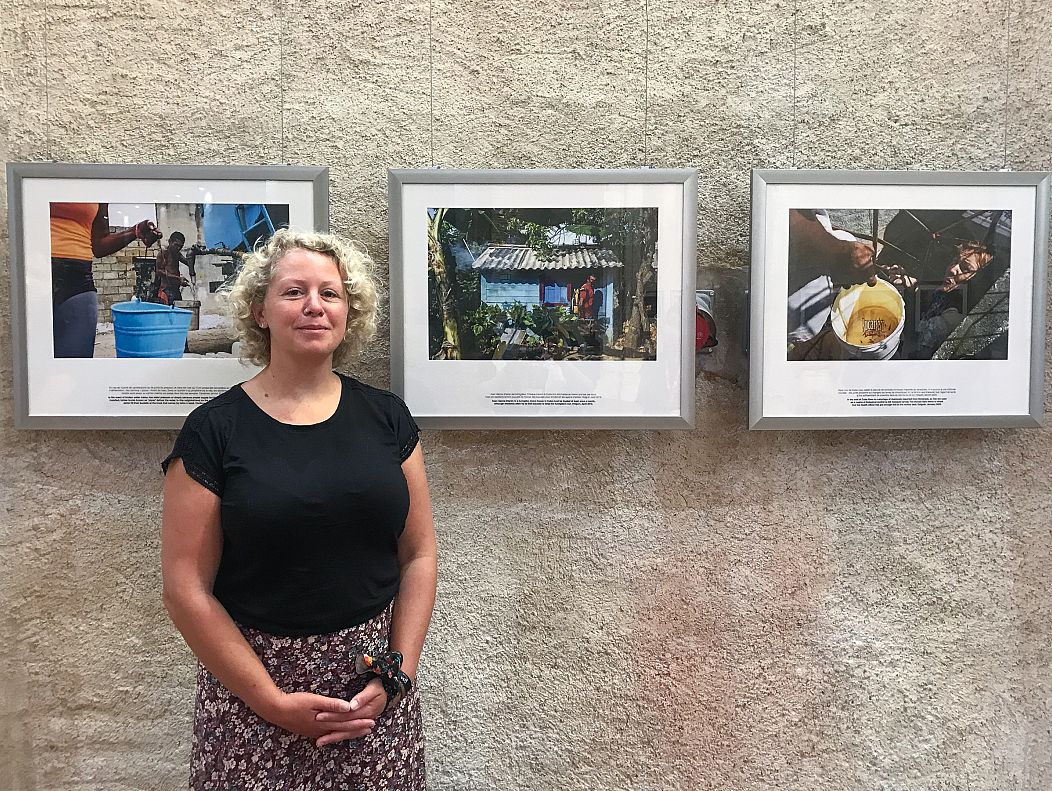Ten inventive ways Cubans tackle their drinking water problems
Less rainfall, a growing population, the exhaustion of water utilities, and economic hardships are among the reasons for the scarcity of drinking water in Cuba. The daily routines of life without clean running water explained in the work by photographer Sanne Derks.
Drinking water is not taken for granted in Cuba.
Sparse rainfall, a growing population, the exhaustion of water utilities, a crippling US embargo and general economic hardships are among the main reasons that there is a scarcity of drinking water in the country.
Sanne Derks, a Dutch photojournalist and anthropologist has spent months exploring Cuba’s water problem.
Recently, the international photojournalism festival, Visa pour l’image, housed her photography exhibition ‘Manifiesto del agua’. There, in the French town of Perpignan, Euronews caught up with her to discuss the numerous, sometimes very inventive ways the Cubans have found to tackle the problems with water access. Here are some of them.
Drinking water is promised in Cuba’s new constitution
In 2019 the communist state recognized the right of every Cuban citizen to have access to drinking water. Despite some visible efforts, keeping this promise seems to be a real challenge.
Households have water tanks to help manage the problem of supply outages
There is no such thing as running drinking water 24 hours per day, every day, Sanne explains.
For example Trinidad, a town in central Cuba, usually has 2 hours of running water every 5 days. But when a very old aqueduct - the only source of water in the area - broke, there was no supply for 20 days while repairs were carried out, so untreated water was delivered that had to be cleaned by the people themselves.
Everything is mended
In Cuba, nationalised companies are responsible for all the essential amenities, including water supply. The struggling economy has resulted in a lack of renovation, that is also often blamed on the embargo imposed by the US.
“Now, the pandemic has complicated the situation even further for Cuba, as there are little or no planes, thus even fewer supplies. Everything that can be mended in the country is mended with those limited supplies that are available,” - photographer explains.
The water is delivered in water in trucks
If the water pipes are broken or don’t exist, water is delivered by trucks.
In the centre and in the outskirts, you can see people with buckets coming towards the truck refilling their water storage.
This way of supplying water is very important, but not always reliable.
Last year, fuel shortages in the country provoked by the crisis in Venezuela aggravated Cuba’s water problems further. With no petrol, water trucks couldn’t be used to supply people with water.
The health brigade works to check water sanitation
“These are the employees of the Health Brigade, you can see, they have a bit of authority” - says Derks pointing at one of the pictures showing the health officers whose job it is to control the quality of water.
“They use notepads, pencils, nothing is digitised. At 8 o’clock they have to present themselves for a meeting, where they have to show all the necessary materials and almost everyone is lacking something. Then they are sent to the streets to do their work.”
Fish replace chemicals for biological control
Keeping water in storage tanks can cause another problem: mosquitoes that transmit different tropical diseases can lay their eggs there. The health departments are tasked with checking these tanks to ensure there are no larvae in them. Since the chemicals which would usually be used to prevent this are scarce, they’ve had to find another solution. Fish, which like to eat the larvae are kept in the water tanks.
“The fish dies in the tank after a while and then the new fish is put in. Yes, it’s a hassle,” - Sanne says.
Fumigation is widely used
To fight mosquito-transmitted diseases, fumigation is used too. Fumigators usually come unannounced and the inhabitants have to leave their house along with their animals for more than an hour. Due to the inconveniences it causes, people sometimes try to avoid fumigation. But they tend to take it more seriously if there is an epidemic, the photographer observed.
Solidarity and cooperation is a norm
“Cubans don’t have this mentality to complain; they turn everything into something positive, this is their charm and their strength.” - the photographer shares. “They say: let’s have a beer and fix this. People are kind and they are willing to share. They have a great sense of community and are very helpful.”
“If the water pressure in the pipes is too low, a water pump can be used. But these are hard to find and have to be imported. Cubans can go from house to house collecting the money for an initiative like this, they do it together,” says Derks.
The commercial sale of water is illegal but tolerated
In areas that have no water mains, the government constructs wells. Locals sometimes sell it to people in other regions, transporting water in tanks on horse-drawn carriages. Officially the commercial sale of water isn’t allowed. If stopped by the police, sellers will say that the water is being transported for family use. Police do not have the proof of transactions, and generally tend to turn a blind eye to this business.
Hotel pools are popular
Lying by the hotel pool, tourists have no clue about the water scarcity in the country, as the priority water supplies are given to the tourist areas.
For nearly a decade, Cubans have been allowed to bathe in hotel pools. Some of them have become very popular among locals, others charge up to 80 euros per day for this service - a sum of money Cubans would not be able to afford.
Since it’s a significant part of the country’s economy, the locals understand that it’s important to keep tourists happy. However, sometimes extreme situations occur and a water pipe might be directed to the hotels from a neighbourhood that has no water for the local inhabitants.














